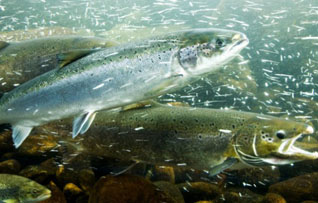 be a future source of protein for American salmon, according to Erik-Jan Lock, a scientist at the National Institute of Nutrition and Seafood Research (NIFES). Produced by separation of proteins and fats followed by drying of insect larvae, insect meal is extremely rich in proteins, and its amino acid make-up is similar to that of fishmeal, according to Lock.
be a future source of protein for American salmon, according to Erik-Jan Lock, a scientist at the National Institute of Nutrition and Seafood Research (NIFES). Produced by separation of proteins and fats followed by drying of insect larvae, insect meal is extremely rich in proteins, and its amino acid make-up is similar to that of fishmeal, according to Lock.“Insects can transform all sorts of organic material, such as food waste. Today, we throw out about 20 percent of all our food. This could instead be a sustainable resource for the production of insects. On a global scale, insect meal based on organic waste could provide three times as much protein as all the soya produced today. In other words, it has great potential,” said Lock.
“We need more knowledge about which substances, and how much of them, we are talking about in order to be sure that fish-feed based on insects would be safe for the fish themselves and for consumers,” said Bente Torstensen, NIFES director of research.
Using insects as a feed in aquaculture is not new, and some scientific trials have already been carried out on tilapia and rainbow trout, among other species, although insect meal has never been brought into use on a large scale.
The trials that have been performed at NIFES are the first that involve Atlantic salmon. The insect meal was provided by Dutch company Protix Biosystems BV, that cultivates insects on a large scale.
“Insect meal could make an important contribution to the sustainable development of the aquaculture industry. We want to do more research in order to develop the necessary knowledge base,” said Lock.





